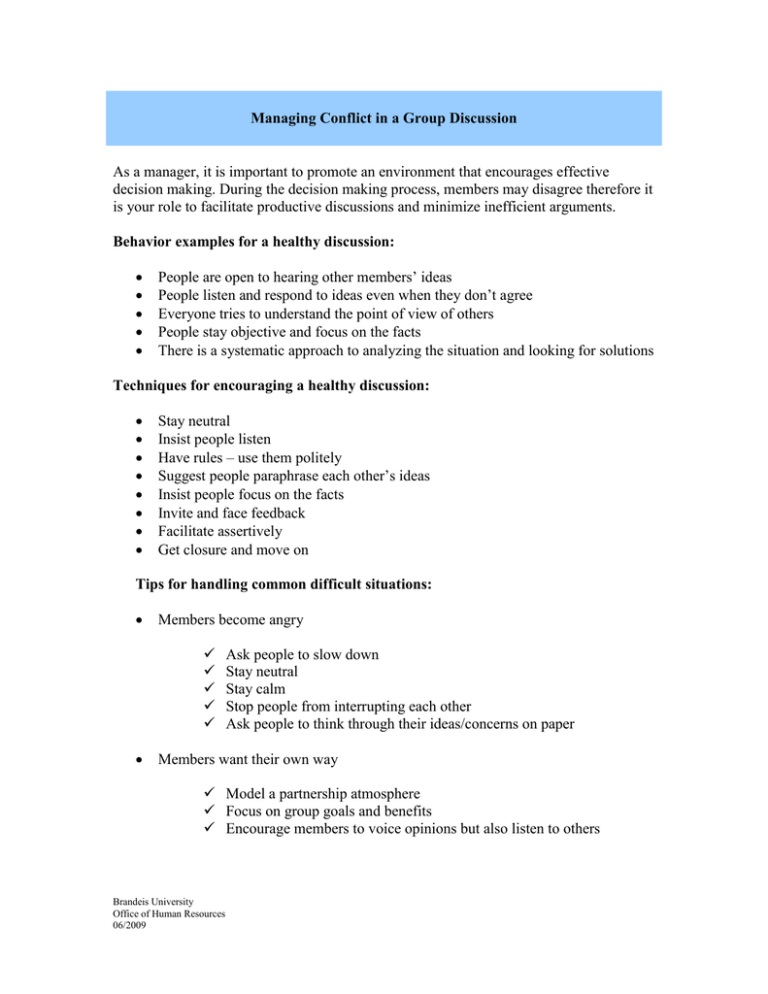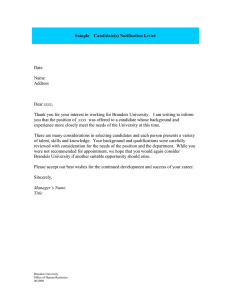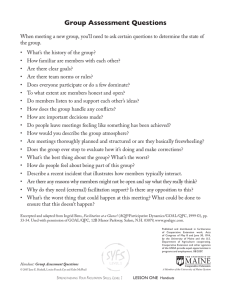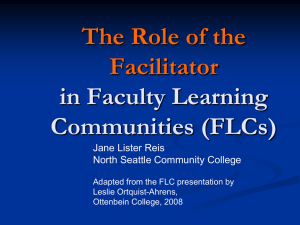As a manager, it is important to promote an environment... decision making. During the decision making process, members may disagree... Managing Conflict in a Group Discussion
advertisement

Managing Conflict in a Group Discussion As a manager, it is important to promote an environment that encourages effective decision making. During the decision making process, members may disagree therefore it is your role to facilitate productive discussions and minimize inefficient arguments. Behavior examples for a healthy discussion: People are open to hearing other members’ ideas People listen and respond to ideas even when they don’t agree Everyone tries to understand the point of view of others People stay objective and focus on the facts There is a systematic approach to analyzing the situation and looking for solutions Techniques for encouraging a healthy discussion: Stay neutral Insist people listen Have rules – use them politely Suggest people paraphrase each other’s ideas Insist people focus on the facts Invite and face feedback Facilitate assertively Get closure and move on Tips for handling common difficult situations: Members become angry Ask people to slow down Stay neutral Stay calm Stop people from interrupting each other Ask people to think through their ideas/concerns on paper Members want their own way Model a partnership atmosphere Focus on group goals and benefits Encourage members to voice opinions but also listen to others Brandeis University Office of Human Resources 06/2009 Members go off the agenda Suggest setting up a separate meeting to discuss additional issues Write key points/ideas on a flip chart and use to refocus the group Take a short break. Start after the break with the next agenda item A member makes the same point repeatedly Write the point on the flip chart, thank the person, and move on Explain how and when the point will be followed up Approaches to resolving conflict: Avoid: Changing the subject and not dealing with the issue at the current time. This is useful when emotions are too high, when more information is needed, or when a bigger problem exits that needs to be addressed first. Accommodate: Asking members to get along and accept a certain point of view even if there is disagreement. This is useful when keeping harmony in the group is more important than the actual decision. Compromise: Finding middle ground when opposite opinions exit. This is useful when both sides support some mutual goals, and when collaborating does not work. Compete: When a person of authority uses formal rules and force to achieve the needed outcome. This may divide the group into winners and losers and should be used when there is only one viable option. Collaborate: Members constructively address the problem and agree on a resolution for each issue to achieve the desired outcome. Many successful facilitators prefer this approach. To use this method effectively, members must: Support each other in a trusting atmosphere Be willing to work toward a solution Have all necessary information available Believe the decision is important enough to take the necessary time to complete this process Sources: Facilitation at a Glance by Ingrid Bens, M.Ed, Goal QPC and AQP 1999 Facilitator Resources-Handling Conflicts and Common Problems with Groups Complete Guide to Facilitation: Enabling Groups to Succeed by Tomas Justice and David Jamieson, HRD Press 1999 Facilitating Communication and Conflict Resolution The Manager as Facilitator by Judy Wichard and Nathalie L. Kees, Praeger Publishers 2006 Brandeis University Office of Human Resources 06/2009 Brandeis University Office of Human Resources 06/2009







